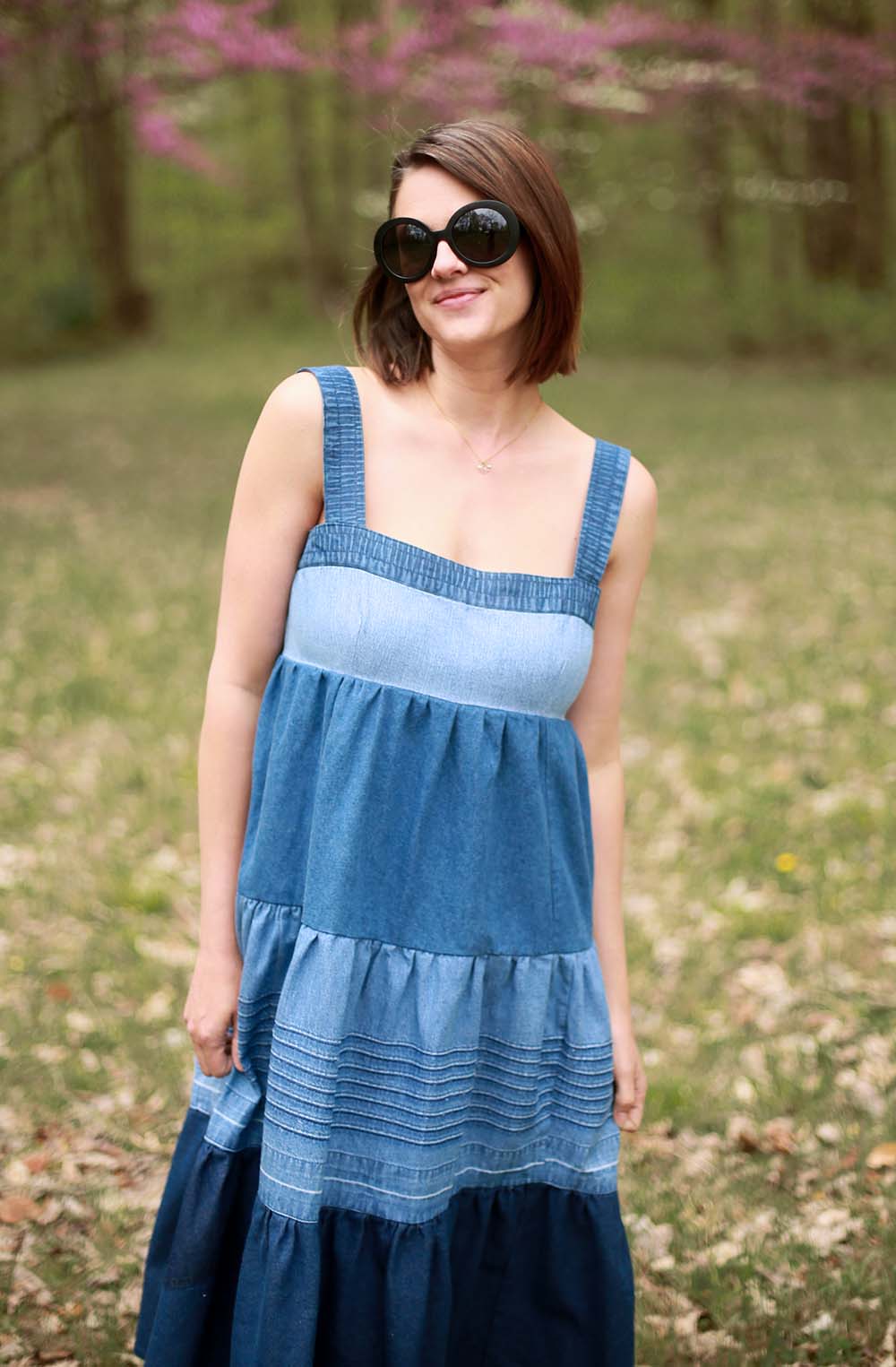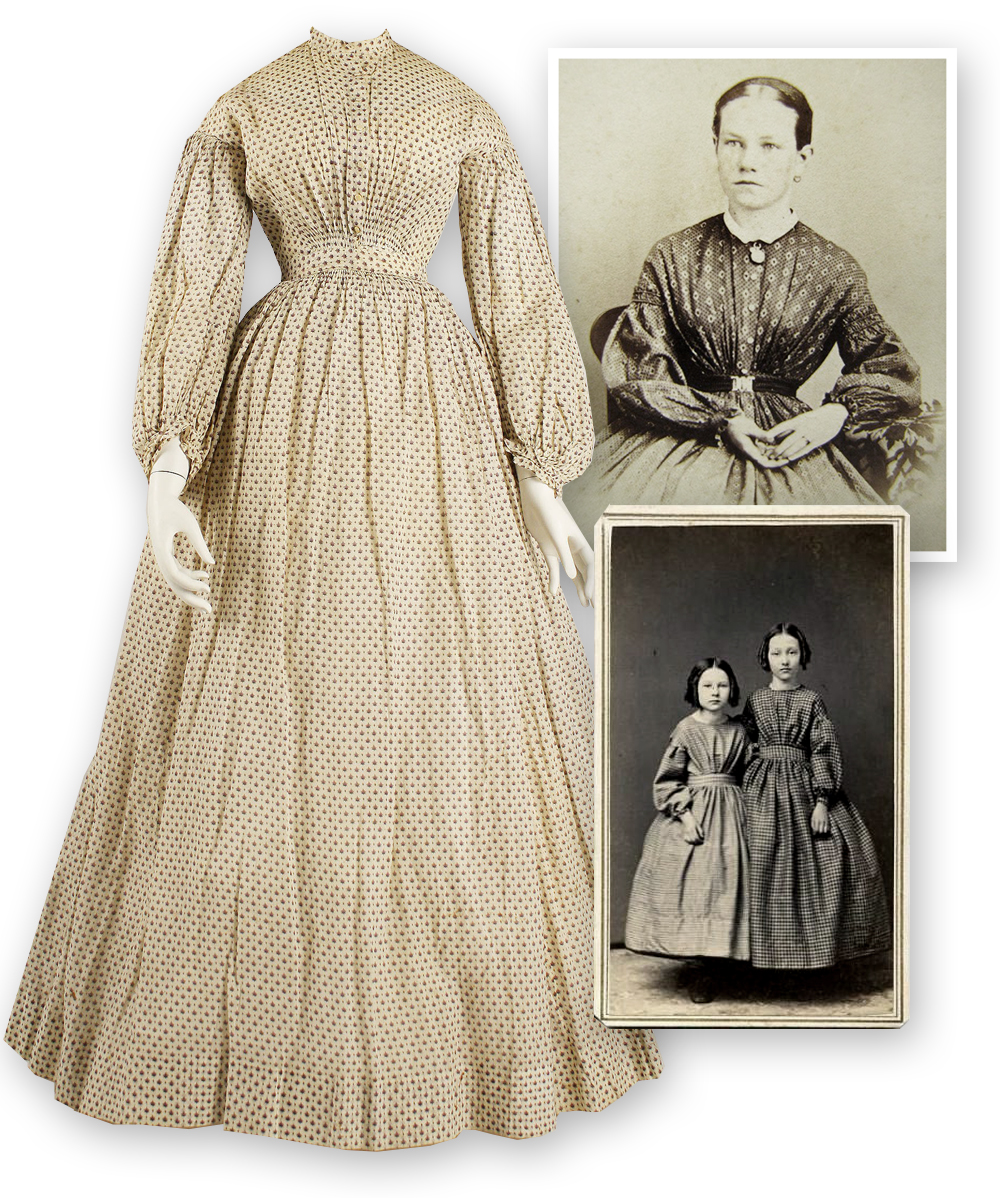The Kirsten Project | Dress Inspiration
/dress, late 1830s, metropolitan museum of art, daguerrotypes of women and girls in mid 19th century dresses
The real root of The Kirsten Project has been for me to try to untangle the mystery of how each aspect of Kirsten’s costume came together and to make my best guess on what Pleasant Company used as an inspiration, all while staying true to early photos and extant pieces of 1850s fashion.
pleasant company catalog
Luckily, when it comes to Kirsten’s dress, we know exactly where to look… remember the early catalogs and the girl sized dresses you could buy to match your doll? On Kirsten’s page an ecru printed dress was shown with the following copy:
“This antique dress was Pleasant Company’s inspiration for Kirsten’s wardrobe. Made with loving care more than 125 years ago by a mother that took pride in tiny stitches, it’s hem faced in coordinating fabric, a practical, thrifty way to use precious scraps of material, but such a pretty touch that we did it on purpose when we recreated Kirsten’s dresses for you.”
This extant dress is also shown in the “Peek Into the Past” section at the end of Kirsten Saves the Day and in Welcome to Kirsten’s World 1854. If you look closely you can find picture credits (right behind the title page back at the front). This dress is from the Wisconsin Historical Society and thanks to a gift from Pleasant T. Rowland herself (the creator of Pleasant Company and the American Girls), the entire children’s clothing collection is available to view to the public. God bless the museums that post their collections online - it’s a priceless resource for costumers like me! It took me just minutes to scan through the collection before I found the dress that inspired Kirsten’s! The description of the dress reads:
“Ecru-colored cotton, printed with a half-drop pattern of small red and brown radishes on a ground of small scattered brown spots; hand-sewn; slightly above natural waistline, with inset self-fabric band, 1.5" wide, with pattern going the opposite direction from the rest of the dress, and piped on both seams; bodice is gathered into the waistband in a section in the center; calf-length skirt is cartridge pleated into the waistband all the way around; long and full bishop-style sleeves; 1.5" pleat taken in above hem of skirt; narrow band collar; various calicos used to line hem of skirt, waistband, and bodice; center back opening closes with 5 white cone-shaped glass shank buttons from neck to waist, and two metal hooks and eyes at the waistband.”
women and girls in printed dresses, radish print child’s dress, 1853-1857, wisconsin historical society
The signature elements I will recreate in my adult sized dress (which are also very similar to the dress shown above from The Met) are: dropped shoulders with piping on the armscye, full sleeves pleated into a cuff, fan pleating at the center front (gathered in the girl’s version), piping at the waistline, gauged/cartridge pleats to attach the skirt to waist and finally, a printed hem facing that differs from the body of the dress. I’m using a sewing pattern that has been made from an existing dress dated between 1856-1862.
Prints from an 1850’s Swatch Book
While the original dress is ecru with a small radish print, Kirsten’s dress is described in Meet Kirsten as “patterned with little red flowers” and has a blue background. My guess is that the blue, paired with the red stripes of her traditional Swedish apron, created a very American look for Kirsten. This shade of blue was also pretty popular in the 1980s when the character was created. While there are a lot more examples of brownish tones during this era, as seen at left, some blues do survive. I’ve created my own adult sized print based on the description of Kirsten’s dress, illustrations from her series and from the doll’s original printed dress. I can’t wait to reveal it to you in the final photos of this project!
Extant examples of blue print fabric from the mid-19th century (Top LEFT 1845-1850 MODE MUSEUM HASSELT, TOP RIGHT 1867-1869, KENT STATE UNIVERSITY, CHILD’s Dress 1850-1855, Metropolitan museum of art)















